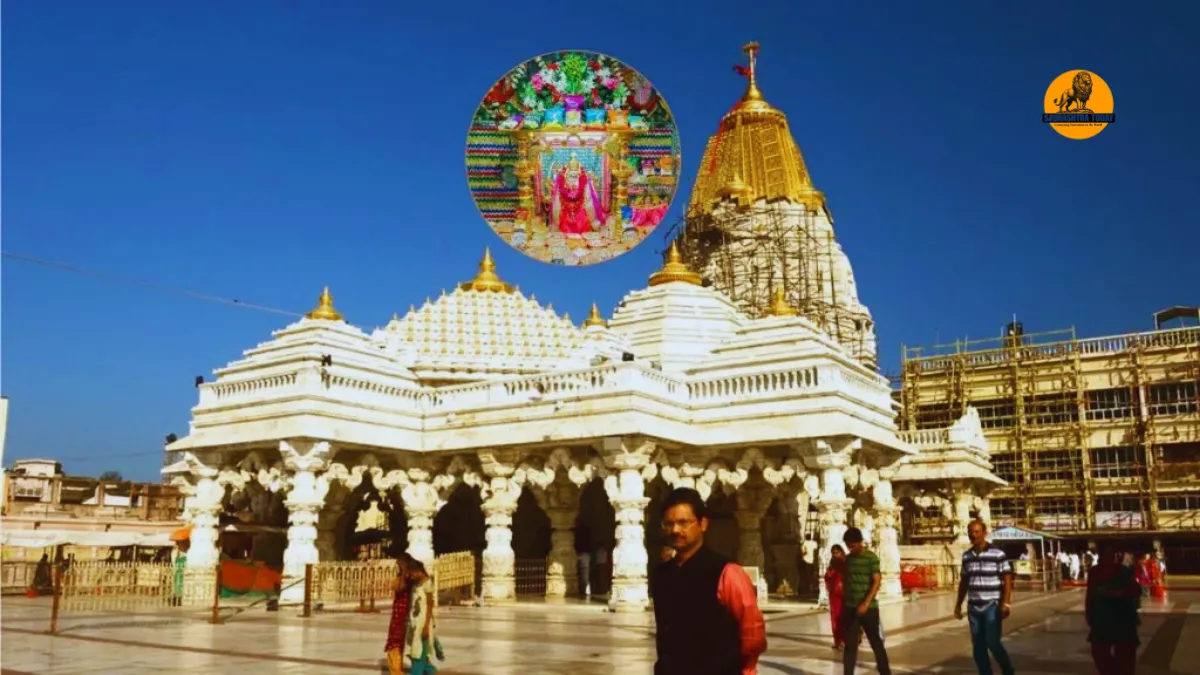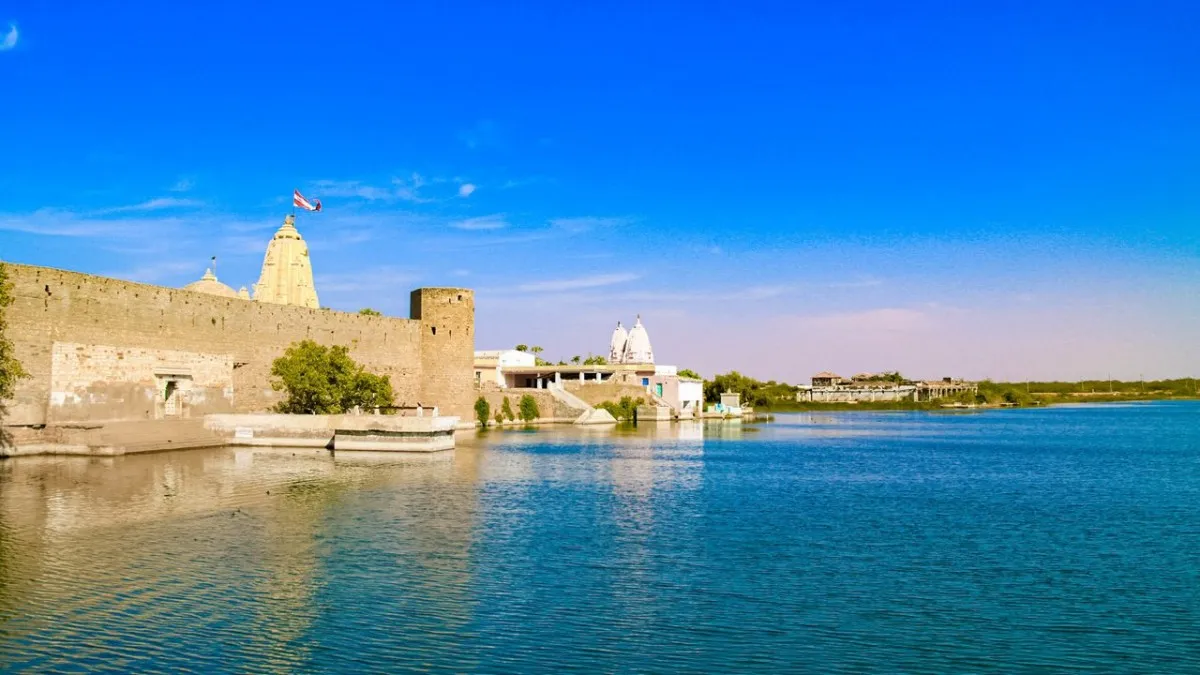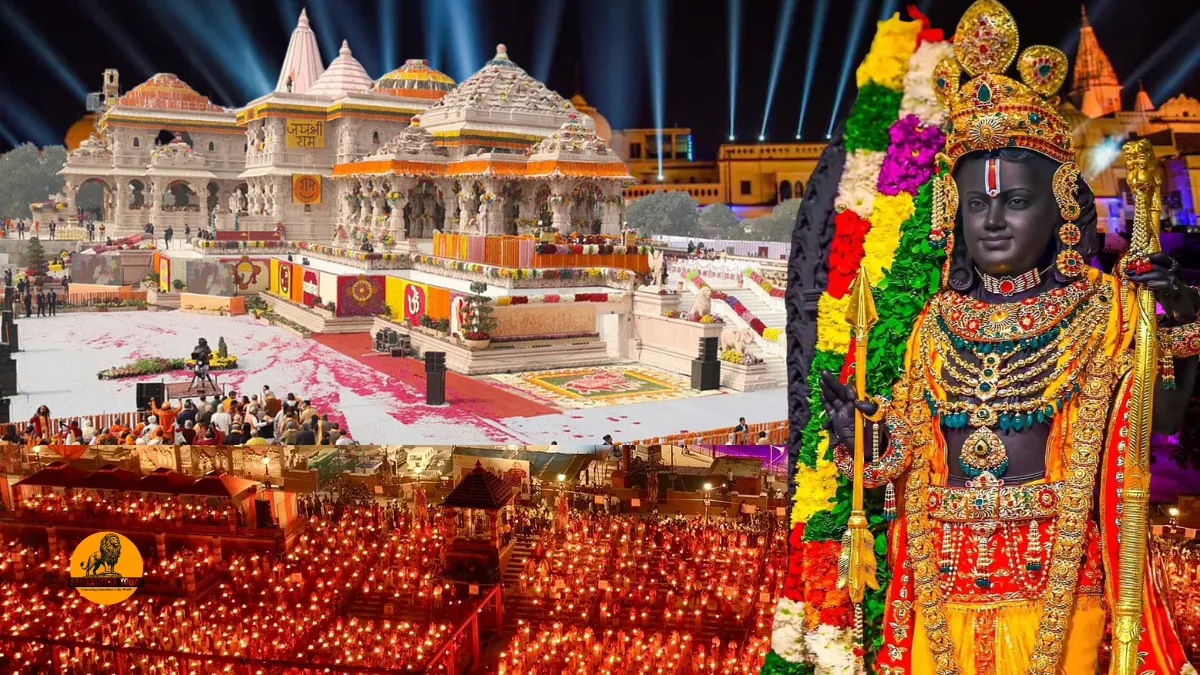The History of Ambaji Temple is deeply rooted in India’s spiritual tradition, mythology, and culture. Located in Gujarat, this temple is not just a sacred site but also a powerful symbol of faith, devotion, and divine energy. Dedicated to Goddess Amba, also known as Arasuri Amba, the shrine is one of the 51 Shakti Peethas of India. It is believed to represent the heart of Goddess Sati and continues to attract millions of devotees every year.
Ambaji Temple is considered a timeless center of Shakti worship, where the cosmic power of the universe is revered in its purest form. This sacred space is not only important for religious tourism but also for understanding the cultural roots of India’s spiritual history.
The Significance of Ambaji Temple
The Ambaji Temple holds immense religious importance for Hindus. Goddess Amba, worshipped here, is considered an incarnation of Adya Shakti, the supreme cosmic power responsible for destroying evil and maintaining universal balance.
Unlike many temples that house an idol, Ambaji Temple is unique because it does not contain any statue or physical representation of the Goddess. Instead, the deity is worshipped in the form of a sacred Shree Yantra, known as the Shakti Visa Sri Yantra. This golden yantra, with its convex shape and 51 holy Bijakshara (sacred seed letters), represents the Goddess’s divine energy.
The temple’s architecture and its spiritual ambiance give devotees a direct connection with the formless power of Shakti. To maintain the sanctity of the Yantra, devotees are asked to cover their eyes with a white cloth before entering for worship, ensuring that the power remains mystical and untouched by human curiosity.
The Legend of Ambaji Temple
The History of Ambaji Temple is tied to fascinating legends from Hindu mythology. One of the most prominent stories goes back to the time of Sati and Shiva. According to the scriptures, when Sati immolated herself during Daksha Yajna, Lord Shiva performed the cosmic Tandava dance in grief, carrying her body. As a result, her body disintegrated into 51 sacred pieces, which fell on different parts of the Indian subcontinent, giving rise to the Shakti Peethas.
It is believed that the heart of Goddess Sati fell at the site of Ambaji Temple, making it one of the holiest Shakti shrines.
Another legend associated with the temple tells the story of King Danta, who wished for the Goddess to reside in his kingdom. The Goddess agreed but warned him not to look back while leading her to Danta. As he walked, the sound of the Goddess’s anklets reassured him of her presence. However, unable to resist curiosity, the king looked back. The Goddess, bound by her own condition, stopped right there and refused to move further. The spot where she halted became the present-day Ambaji Temple.
This story highlights the idea of complete faith and surrender in devotion. To this day, many pilgrims visit both Ambaji Temple and the Danta Temple, believing that their pilgrimage remains incomplete without offering prayers at both places.
Historical Roots of Ambaji Temple
The History of Ambaji Temple dates back to the pre-Vedic era, making it one of the most ancient centers of Shakti worship in India. The temple is nestled in the Aravalli Hills and has been a hub of Tantric and Vedic practices for centuries.
The Goddess here is popularly known as Arasur ni Ambe Maa, reflecting her association with the Arasur region of the Aravalli range. Locals frequently chant her name in daily prayers, which shows the deep bond between the community and the Goddess.
The temple has also been linked with Tantric traditions, and it is believed that several mystics, including the famous Batuk Tantric, were associated with this shrine. Over centuries, Ambaji Temple has retained its spiritual importance, with generations of devotees maintaining rituals that date back thousands of years.
Unique Features of the Temple
What makes Ambaji Temple stand out is its simplicity and spiritual intensity. Unlike many temples with grand idols and sculptures, this shrine worships the abstract form of the Goddess through the Shree Yantra. The priests have traditionally decorated the roof and the inner sanctum with sacred symbols, helping devotees feel the divine presence without a physical idol.
Photography of the Yantra is strictly prohibited to maintain its sanctity. Even while worshipping, devotees must tie a white cloth over their eyes, symbolizing that true devotion comes from faith, not sight.
Also read: Ashapura Mata Madh History: The Sacred Legacy of Kutch
Ambaji Temple in Modern Times
Today, the Ambaji Temple continues to attract millions of pilgrims, not only from Gujarat but from all over India. The temple is especially crowded during festivals like Navratri, when devotees celebrate the victory of Goddess Durga over Mahishasura. During these days, Ambaji becomes a cultural hub filled with devotional songs, Garba dances, and spiritual fervor.
The temple town has also become a major site for religious tourism, contributing to Gujarat’s cultural heritage and economy. Pilgrims often trek to Gabbar Hill, where the original shrine of Ambaji still exists, making it a deeply fulfilling spiritual journey.
A Cultural and Spiritual Symbol
The History of Ambaji Temple is not just about mythology or legends; it represents the deep connection between faith and community. It reflects how generations of people have preserved ancient traditions, passing them down with devotion.
The temple also emphasizes the idea of formless worship, where divinity is beyond idols and images. Instead, it resides in energy, vibrations, and faith.
Also read: Discovering Ashapura Mata Madh Kutch: The Sacred Heart of Bhuj
Key Facts About Ambaji Temple
| Feature | Details |
|---|---|
| Location | Banaskantha District, Gujarat, India |
| Deity | Goddess Amba / Arasuri Amba |
| Significance | One of the 51 Shakti Peethas, heart of Goddess Sati |
| Unique Feature | Worship through Shakti Visa Sri Yantra, no idol present |
| Legends | Heart of Sati fell here; King Danta’s story |
| Associated Hill | Gabbar Hillock (original shrine) |
| Festivals | Navratri, Bhadarvi Purnima |
| Historical Roots | Pre-Vedic period, Tantric traditions |
Also read: Visit Ambaji Temple: Everything About History, Timings, and Festivals Ambaji Aarti Time
Conclusion
The History of Ambaji Temple is a journey through time, faith, and devotion. From its roots in pre-Vedic traditions to its legends of Goddess Sati and King Danta, the temple continues to stand as one of the most sacred Shakti Peethas of India. Its uniqueness lies in its worship of the formless divine power through the Shree Yantra, reminding devotees that faith is beyond physical representation.
For pilgrims and spiritual seekers, Ambaji Temple is not just a destination but an experience of divine energy, cultural heritage, and timeless devotion.



















